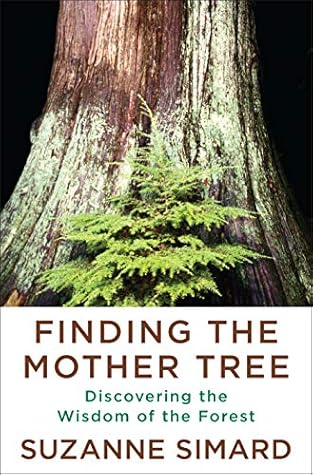More on this book
Community
Kindle Notes & Highlights
Read between
November 29 - December 2, 2021
“The Coast Salish say that the trees also teach about their symbiotic nature. That under the forest floor, there are fungi that keep the trees connected and strong.”
We emphasize domination and competition in the management of trees in forests. And crops in agricultural fields. And stock animals on farms. We emphasize factions instead of coalitions. In forestry, the theory of dominance is put into practice through weeding, spacing, thinning, and other methods that promote growth of the prized individuals. In agriculture, it provides the rationale for multimillion-dollar pesticide, fertilizer, and genetic programs to promote single high-yield crops instead of diverse fields.
Ecosystems are so similar to human societies—they’re built on relationships. The stronger those are, the more resilient the system.
The lupine and soapberry were nitrogen fixers,
I made a map: Mother Trees, saplings, seedlings. Lines sketched between them. Emerging from my drawing was a pattern like a neural network, like the neurons in our brains, with some nodes more highly linked than others. Holy smokes. If the mycorrhizal network is a facsimile of a neural network, the molecules moving among trees were like neurotransmitters. The signals between the trees could be as sharp as the electrochemical impulses between neurons, the brain chemistry that allows us to think and communicate. Is it possible that the trees are as perceptive of their neighbors as we are of our
...more
hobbit.
Mary Thomas’s mother and grandmother Macrit had taught her to show gratitude for the birches, to take no more than she needed, to place an offering in thanks. Mary Thomas had even called the birches Mother Trees—long before I had stumbled onto that notion. Mary’s people had known this of the birches for thousands of years, from living in the forest—their precious home—and learning from all living things, respecting them as equal partners. The word “equal” is where Western philosophy stumbles. It maintains that we are superior, having dominion over all that is nature.
Diversity matters. And everything in the universe is connected—between the forests and prairies, the land and the water, the sky and the soil, the spirits and the living, the people and all other creatures.
I come from a family of loggers, and I am not unmindful that we need trees for our livelihoods. But my salmon trip showed that with taking something comes the obligation to give back. Of late I’ve become increasingly enchanted by the story told by Subiyay, who talks of the trees as people. Not only with a sort of intelligence—akin to us humans—or even a spiritual quality perhaps not unlike ours. Not merely as equivalent to people, with the same bearings. They are people. The Tree People. I don’t presume to grasp Aboriginal knowledge fully. It comes from a way of knowing the earth—an
...more
reconnect with nature—the forests, the prairie, the oceans—instead of treating everything and everyone as objects for exploitation.
expanding our modern ways, our epistemology and scientific methodologies, so that they complement, build on, and align with Aboriginal roots. Mowing down the forests and harvesting the waters to fulfill our wildest dreams of material wealth just because we can has caught up to us.
Scientists now are more willing to say that forests are complex adaptive systems, comprised of many species that adjust and learn, that include legacies such as old trees and seed banks and logs, and these parts interact in intricate dynamic networks, with information feedbacks and self-organization. Systems-level properties emerge from this that add up to more than the sum of the parts. The properties of an ecosystem breathe with health, productivity, beauty, spirit. Clean air, clean water, fertile soil. The forest is wired for healing in this way, and we can help if we follow her lead.


